Film, Radio and TV - 25 |
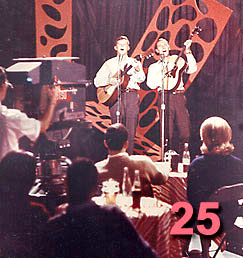
The
Golden Age
The so-called "golden age of television" started in the 1950s, when television began its explosive growth. Radio sets, which had dominated living rooms for several decades, had been shuffled to kitchens and bedrooms to make room for the new center of attention: TV. Television became what radio had been in its golden age--the central medium of entertainment and diversion for almost every home. Much of radio's top on-air talent transferred to TV during this era. However, the visual advantages of the medium weren't effectively utilized for some time. Typically, TV was simply "radio with pictures." Weekly shows by comedians Jack Benny and Red Skelton made the transition to TV, and were highly successful. New stars also emerged, including Milton Berle, and Lucille Ball and Desi Arnaz, who starred in the weekly situation comedy "I Love Lucy." |
Ed
Sullivan, who was on the air for 20 years, admitted that he had Sullivan introduced singer Elvis Presley and the British Rock Group, The Beatles, (pictured on the right) to television audiences. In both cases he saw that the performances were modified for conservative family viewing. The phrase in the Beatle song, "I want to spend the night with you," was changed to "I want to spend some time with you," and as Elvis Presley sang the cameras always kept their shots above his waist, so that his swiveling hips wouldn't offend some viewers.
In addition to popular artists and entertainers, Sullivan featured ballet, well-known opera singers, and many exceptional performers from outside the United States. Many comedians (even on his own show) mocked Sullivan's stiff posturing and strange way of pronouncing some words. But, Ed Sullivan was responsible for introducing more new talent to American audiences than anyone in the history of broadcasting. Once discovered, some of his guests went on to have their own network TV shows.
And Then There Were the Westerns Two especially popular shows of the era were "Have Gun, Will Travel" and "Gunsmoke." The latter, which had a long run on radio, lasted almost 20 years on TV. Some notable radio personalities, such as the original star of "Gunsmoke," had great radio voices, but weren't deemed photogenic enough for TV. In some cases TV audiences adjusted, in other cases the TV versions soon went off the air. As the 50s drew to a close, action-adventure programs, including westerns, represented the most popular format. As the 60s started, television networks began to show many full-length movies that had played in theaters. To make the films suitable for family viewing they were routinely edited for language and sex--and, to a lesser extent, for violence. (One of the writer's first jobs in television was to edit feature-length films for broadcast.) As the supply of available films started to dwindle, the networks started producing their own "made-for-TV" movies.
Although color film had been around since the 1930s, until the mid-1950s, all television programming was in black and white. And,
just as World War II had derailed the beginning of television in the
40s, a decade later the Korean War would delay the launch of color television. CBS in the 40s had developed a mechanical approach to color TV. It used a large color wheel--not totally unlike the one shown here--driven by a motor. The whole apparatus sat in front of your TV set and you looked through the rotating color sections at the TV picture behind it. The colors in the wheel were synchronized with alternating video images behind the wheel that represented different primary colors (red, blue and green) in the original scene. Although it worked fairly well, like the early mechanical approach to television itself, it introduced some problems--not the least of which was the fact that you would have to keep the bearings on the large color wheel and electric motor oiled to keep them from squeaking or failing. Not only that, but the CBS system was incompatible with the existing black and white NTSC system (the U.S. standard originally approved by the National Television System Committee). Not only would you have to buy a new TV set to watch color TV, but also once you got it, you couldn't use it to see any of the many existing black and white programs. This also meant that, in order to serve the large base of existing black and white receivers, each TV station would have to have two transmitters--one for black and white, and one for color, each operating on a different channel. Today, it's hard to understand how an ungainly system such as this could become the standard for a country, but the FCC approved the approach, and if it weren't for the Korean War, which put things on hold, we might be saddled with the system today. Although there isn't much about a war that's good, with much consumer manufacturing suspended during the Korean War, engineers had time to figure out a better approach to color TV. In this case, it was the RCA engineers. The
approach they came up was all electronic. No squeaky wheels. It was
so ingenious, in fact, that it is considered by many to one of the major
technological feats of the 20th century. Rather than require new TV receivers and transmitters, the all-electronic process interleaved all the color (chroma) information into the existing black and white (luminance) TV signal. The fact that this system incorporated a compatible color approach was critical to its success. Compatible color means that black and white sets can ignore the broadcast signal, and color sets can show both black and white and color programming. Everyone was happy with the system, with the possible exception of a few folks over at CBS; even the FCC, which approved the system in 1953. You can learn more about how the color TV system works
by Before 1956, all TV programming had to be done "live." Until that time, the only way to record TV programs was by using the somewhat less-than-desirable kinescope recordings. Consequently, the period from 1948 to 1959 (when video recording became commonplace) is referred to as the "live" decade of television. The pressure of doing live television--if you made a mistake it just went out over the air for "the whole world to see"--was such good discipline that many famous TV and film stars received excellent training doing live television. Their careers were undoubtedly helped by the fact that some truly substantive teleplays (TV dramas) were produced during this decade, productions that appealed to wealthier, better educated, viewers who could afford the high price of TV receivers. Interestingly, when television production moved from doing everything "live" to using videotape in the late 50s, production costs increased dramatically. Videotaping productions meant that mistakes could be corrected by either stopping the tape and redoing segments or fixing problems in editing. It also meant that directors and actors often were not as well prepared, and simply relied on the option of doing things over. Thus, production times, which can run into thousands of dollars a minute, were significantly extended.
Although there were some famous "goofs" when everything was done "live," there were also some amazing and ingenious "saves" by actors and announcers after things went wrong (as they often did). Sometimes the script would have to be extemporaneously "rewritten" to accommodate a door that wouldn't open, an actor that suddenly got sick, or some other unforeseen occurrence. The author was doing a "live" TV newscast one night when a large Fresnel light exploded over his head sending down a shower of hot chunks of broken glass. In these cases "the show mush go on," and without too much hesitation, it did. In the next module we'll look at television networks and ratings. |
To next module To
index © 1996 - 2005, All Rights Reserved.
|
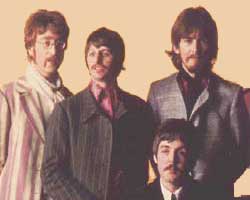 absolutely no talent, himself--except the ability to find good
talent.
absolutely no talent, himself--except the ability to find good
talent.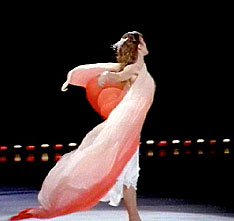
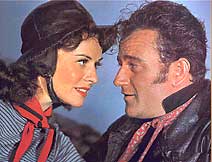 Another
television staple of the golden age of TV was the Western.
Another
television staple of the golden age of TV was the Western.
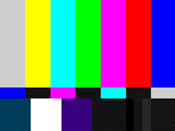
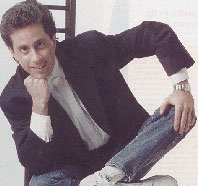 Because
of this, the approach of doing things live-on-tape
has been adopted for many shows. This means that the show is treated
as if it was "live," and the videotape is only stopped for
very major problems.
Because
of this, the approach of doing things live-on-tape
has been adopted for many shows. This means that the show is treated
as if it was "live," and the videotape is only stopped for
very major problems.